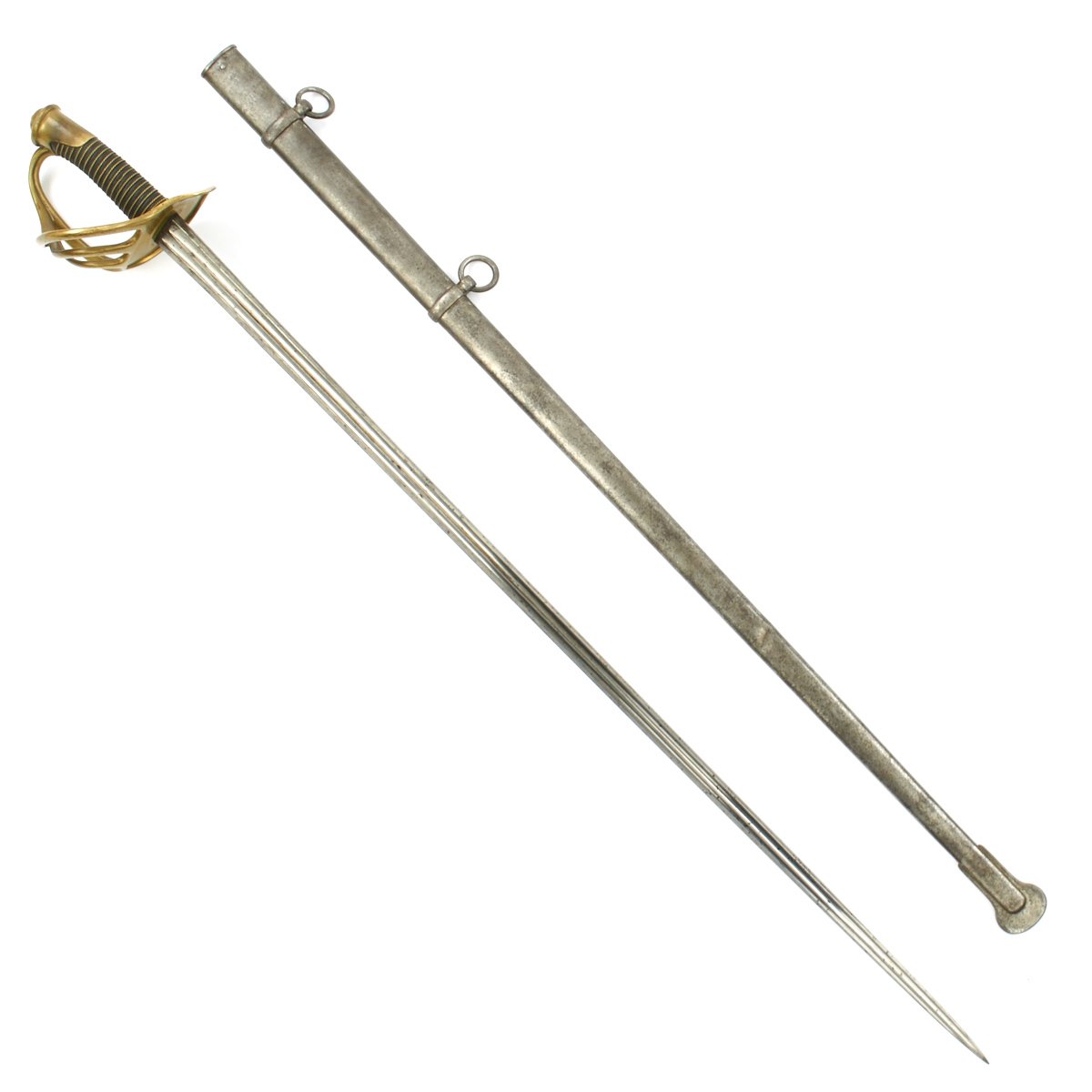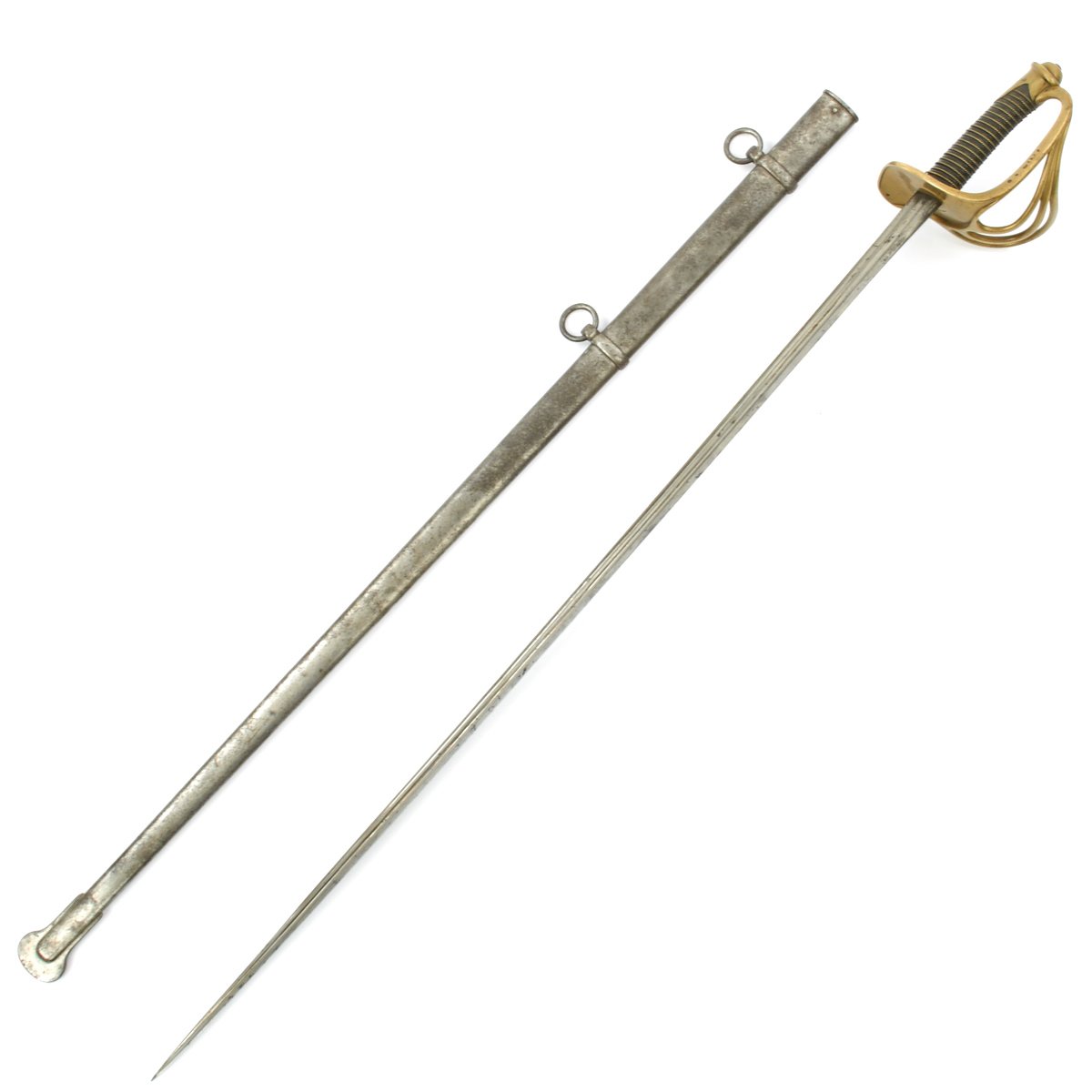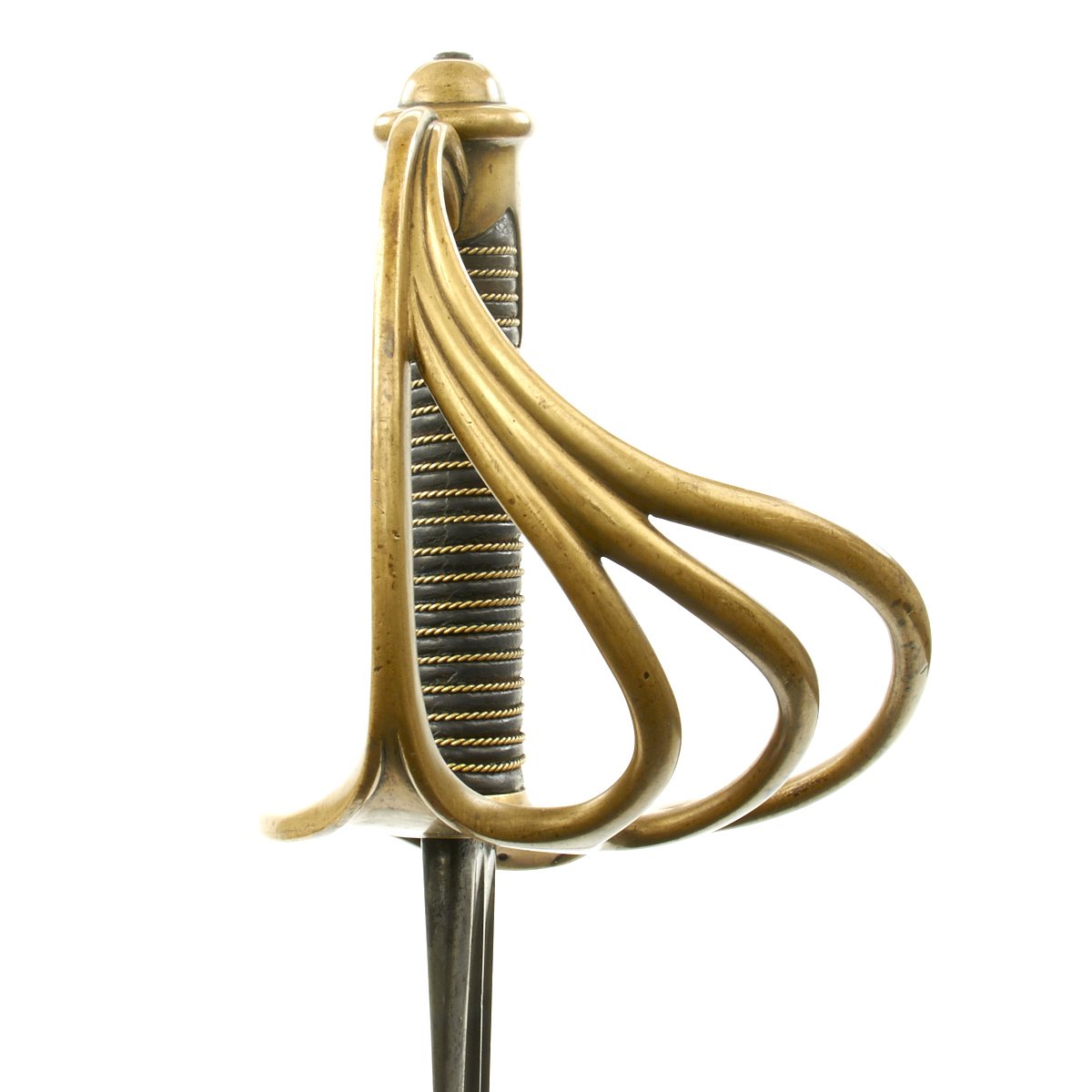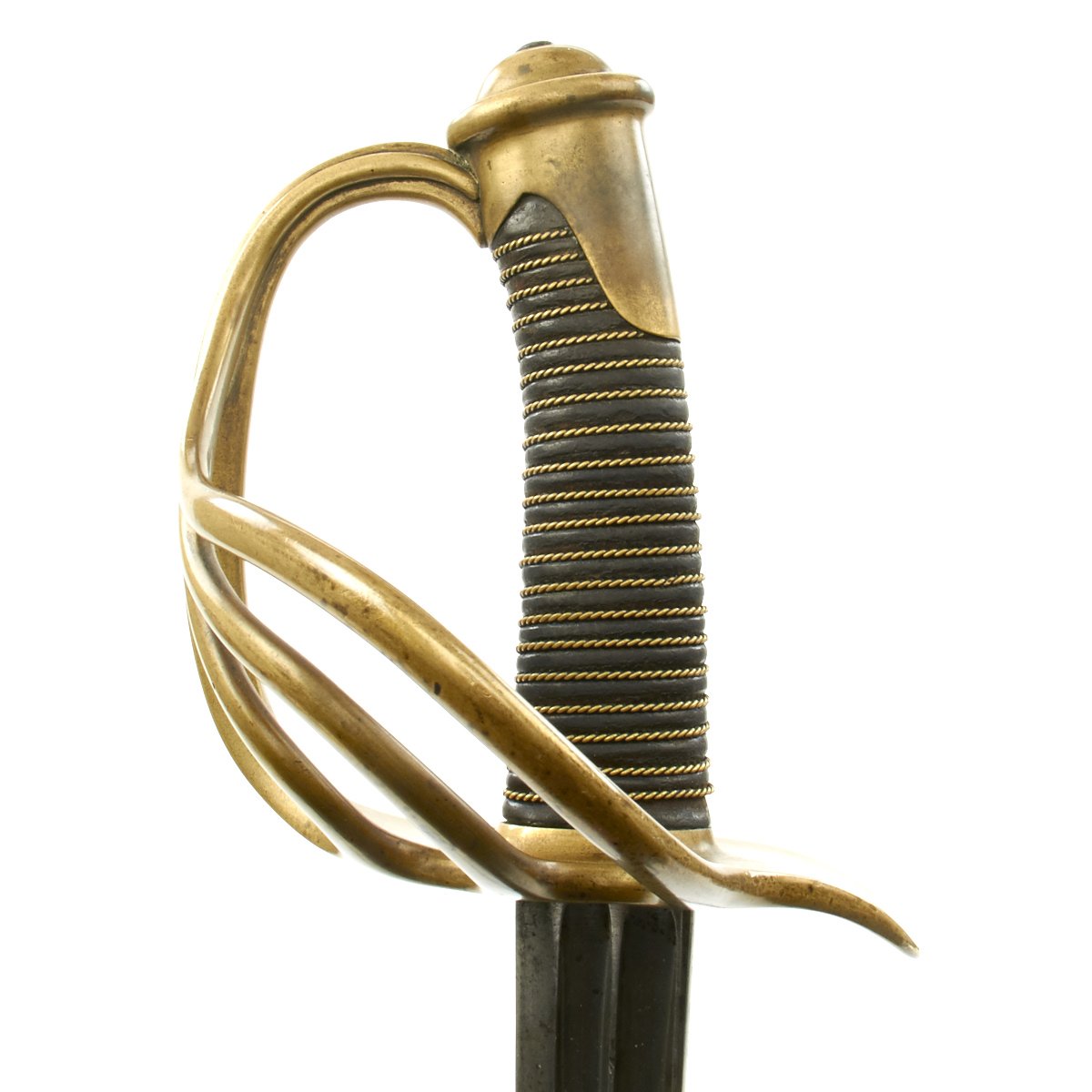Original French 2nd Empire M-1854 Heavy Cavalry Carabinier Sword dated 1862 – Franco-Prussian War Original Items
$ 895,00 $ 223,75
Original Item: Only One Available. Carabiniers-à-Cheval were cavalry equipped with armor and firearms, and were also commonly called heavy cavalry, very similar to Curassier units. They were quite common from the 15th century, up until the late 19th century, and were heavily armored, and had swords to match, their equipment mostly duplicating that of the Curassiers.
The most famous sword of the 1ST Empire was the Heavy Cavalry Curassier Sword, used by Emperor NAPOLEON’S elite Heavy Cavalry throughout the period following the French Revolution, until the destruction of the French at The Battle of WATERLOO in 1815. The early models had a plain pommel mount and the three bar brass guard each ended in a “ball”. After Emperor Napoleon’s defeat at Waterloo in 1815, a new design was decided on known as the Model of 1822 which did away with the ball tipped cross guard bars and added a circular “crown” to the pommel.
This is a really nice example of the same Sword for Carabinier units from the 2nd Empire under Napoleon III, who was defeated by the Prussians in 1870/71. The Model 1854 is 45 1/2 inches in overall length, with a 39″ straight double-fullered blade, terminating in a reinforced point. The sword slightly lighter in construction than its predecessor, but retains the Model M-1822 “Crowned” pommel.
Our example is marked M’re. Imp. de Chât’t. Juin 1862 – Carab’er M’le 1854 on the spine of the blade, indicating production in Mune 1862 at the Imperial Arsenal at Châtellerault, as a Model 1854 Sword for Cababiniers. It comes with all brass mounts, brass wired covered leather grip and is complete with its original heavy steel scabbard. It is marked with proof marks and rack numbers on the guard, and there are also markings on the blade ricasso and hanger loops. This sword was made too late for the Crimean War, but was just what was used in the Franco-Prussian War of 1870.
In very nice matured condition, ready to display.
The Carabiniers-à-Cheval (French for “Horse Carabiniers”) were mounted troops in the service of France.
Their origins date back to the mid-16th century, when they were created as elite elements of the French light cavalry, armed with carbines but then gradually evolved towards semi-independent status during the 18th century. They only became independent units as late as 1788, when a two-regiment heavy cavalry corps was created. From the French Revolutionary Wars onwards, they were the senior heavy cavalry regiments in the French army, rose to prominence during the Napoleonic Wars.
2nd Empire Carabiniers:
Carabiniers were again raised in the form of two regiments by 1824, with their distinctive style of helmet being temporarily adopted by the cuirassiers also. The Carabiniers were present in Paris in June 1848 for the creation of the Republic when nine regiments were brought in to maintain peace, the first time in 200 years that carabiniers were again serving as military police. From 1852 the Carabiniers were a part of the Army of the Second French Empire, but did not serve in the Crimean War. They saw service again in 1870 as a single regiment, but now as part of the Imperial Guard. Following the Franco-Prussian War the Carabiniers were amalgamated with the 11th Cuirassier regiment on 4 February 1871.
The 1-11e Régiment de Cuirassiers of the modern French Army can accordingly trace its origin, in part, to the 19th Century Carabiniers. By coincidence the present day regiment is stationed in Carpiagne within Provence, once the domain of their former commander.
Fast Shipping with Professional Packaging
Thanks to our longstanding association with UPS FedEx DHL, and other major international carriers, we are able to provide a range of shipping options. Our warehouse staff is expertly trained and will wrap your products according to our exact and precise specifications. Prior to shipping, your goods will be thoroughly examined and securely secured. We ship to thousands clients each day across multiple countries. This shows how we're dedicated to be the largest retailer on the internet. Warehouses and distribution centres can be located throughout Europe as well as the USA.
Note: Orders with more than one item will be assigned a processing date depending on the item.
Before shipping before shipping, we'll conduct a thorough inspection of the items you have ordered. Today, the majority of orders will be delivered within 48 hours. The delivery time will be between 3-7 days.
Returns
The stock is dynamic and we cannot completely manage it because multiple stakeholders are involved, including our factory and warehouse. So the actual stock may alter at any time. It's possible that you may not receive your order once the order has been made.
Our policy is valid for a period of 30 days. If you don't receive the product within 30 days, we are not able to issue a refund or an exchange.
You can only return an item if it is unused and in the same state as the day you received it. You must have the item in its original packaging.
Related products
Uncategorized
Australian WWII Owen MK1 Machine Carbine SMG Custom Fabricated Replica with Sling Original Items
Uncategorized
Uncategorized
Band of Brothers ORIGINAL GERMAN WWII Le. F.H. 18 10.5cm ARTILLERY PIECE Original Items
Uncategorized
Uncategorized
Uncategorized
Uncategorized
Uncategorized
Uncategorized
Uncategorized
Uncategorized
Uncategorized
Uncategorized
Uncategorized
Uncategorized
Uncategorized
Uncategorized
Uncategorized
Angolan Rebel 1970s era 60mm Inert Display Mortar from Angolan Civil War Original Items













































































